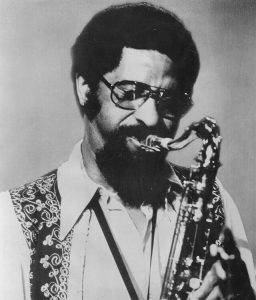By Gabriela Resto-Montero
It was almost as if William Sabourin O’Reilly had to look away from Cuba to see it more clearly. Sabourin, a documentarian who is based in New Orleans, hasn’t lived in his home country for 17 years but the island nevertheless has become the central focus of his film “Código Color, Memorias,” which premieres at the New Orleans Film Festival Oct. 15.
The short film manages a conversation about race on the island and the prejudices that were in place leading up to the revolution.
“That taboo has existed for many years, it was said that [racism] was eradicated in 1964 so you, in 1994, can’t say that there’s prejudice because that’s the revolution,” Sabourin said. “The topic is not discussed and it was swept under the carpet so that you wouldn’t get in trouble. The people who love you would say ‘Shhh, be quiet,’ and created that habit. People don’t speak.”
Despite some apprehension that broaching such a controversial topic might get himself censored, Sabourin shot the film in the hopes of starting a dialogue where none has existed for nearly 60 years. Sabourin’s status as an expatriot provided the critical distance needed to both understand the nuances of race on the island and highlight where they are uniquely Cuban.
“In so far as I’ve lived here for many years, and that I’ve remained close to Cuba, and that I’m black, that I come from humble beginnings,” he said. “I developed as a filmmaker in the United States, I’m seeing it through the prism of the United States.”
Sabourin moved to Virginia in 1999 as a newlywed. There in Petersburg the documentarian found work in construction as he tried to learn English. Not fond of the snowy winters in Virginia, Sabourin jumped at the chance to study in Louisiana.
He transitioned into work as fulltime filmmaker on a wild gamble to stay in New Orleans as Hurricane Katrina hit. He gathered the equipment that he’d saved up to buy during his work broadcasting horse races and recorded as much as he could of the storm.
“I stayed for five days recording everything that crossed my horizon,” he said. “Until I ran out of resources–water, food, and film.” Once he evacuated to Kentucky, Sabourin and his old team from the racetrack edited the footage and published a DVD that he sent to everyone in his personal phone book.. The resulting footage landed him work on documentaries for everyone from HBO to the History Channel to Spike Lee.
Along with his colleagues, Sabourin founded Tungsten Monkey Films to produce more independent projects. Among them, a feature-length on Santiago de Cuba’s annual Carnaval competitions called “La Oruga y La Mariposa (The Caterpillar and the Butterfly)” due out next year. Here, too, Sabourin sees his home country with new eyes.
Both “La Oruga y La Mariposa” and “Código Color, Memorias,” which premiered in Cuba last year, come at a time when the warming relationship between the U.S. and Cuba has fed public curiosity about life on the island. Although “Código Color, Memorias” documents Cuba on the verge of revolution, it’s premiering as the nation once again finds itself on the cusp of a great political change when the lessons learned in generations past might be instructive.
“It’s been almost 60 years with the same ideology and there are many young people, as they say in the United States, ‘millenials,’ who hardly know Fidel Castro because he’s been ill,” said Sabourin, who is 44. “They don’t know the Fidel that I knew, who was an active person.”
Sensitive subject or not, the film was broadcast on national Cuban television and discussed by a panel of experts last April. Now, Sabourin hopes that students in the United States and across Latin America can watch the film and discuss their own experiences and realities.
“What we wanted was to start a modest dialogue between between the young and not-so young,” he said.
You can listen to the full-length Jazz on the Tube interview with William Sabourin in Spanish below.
Interview
Download the mp3 here
Interview excerpts
On hardship in Cuba in the 1990s:
“I was 17 when the Berlin Wall fell. That’s when life started to change, when we had scarcity because we had been completely subsidized by the Communists. From one day to the next our income fell by 80 percent. External forces, like the U.S. blockade, intensified and that really turned the screw. Zero commerce, zero loans, we were between a rock and a hard place–we either had to give up or keep going. That’s when social problems started to germinate, including racial ones.”
On how race intensified income inequality:
“People with lighter complexions came to the United States, came to Miami. When the wall fell these people, light-skinned people with family in Miami, had access to money that us black people didn’t have because we didn’t have any family outside of the country. That intensified the differences, that’s when I felt it in the 1990s. There was confraternity in school but on the street there was a certain racial and political tension. People were wary of the economic and political situation. If you were hungry you couldn’t say anything because if you did then you were a counter-revolutionary.”
On the economic impact of normalizing diplomatic relations between the U.S. and Cuba:
“Obama goes to Cuba and people think that in two weeks it’s going to be like Miami Beach and that’s where you get disappointment. Looking at it clearly, things are changing slowly and with patience. We’re not going to go from being Cuba to being Hawaii.”
On the social changes taking place in Cuba:
“I’ve noticed some acute changes for the better that have had unexpected consequences. Now there are a lot of us Cubans who have lived outside of Cuba for many years, for political reasons but mostly for economic ones. People come to the United States and learn about capitalism then go back to Cuba and buy a building to create a business and that creates a difference in income that was not known before. There’s development, they paint houses, and you can see the contrast. People start to sell historic homes to better their lives but then in that house where seven people used to live there now lives one and that displaces people and the community loses.”
– Gabriela Resto-Montero
Jazz on the Tube
P.S. Our unique programming is made possible by help from people like you. Learn how you can contribute to our efforts here: Support Jazz on the Tube
Thanks.






